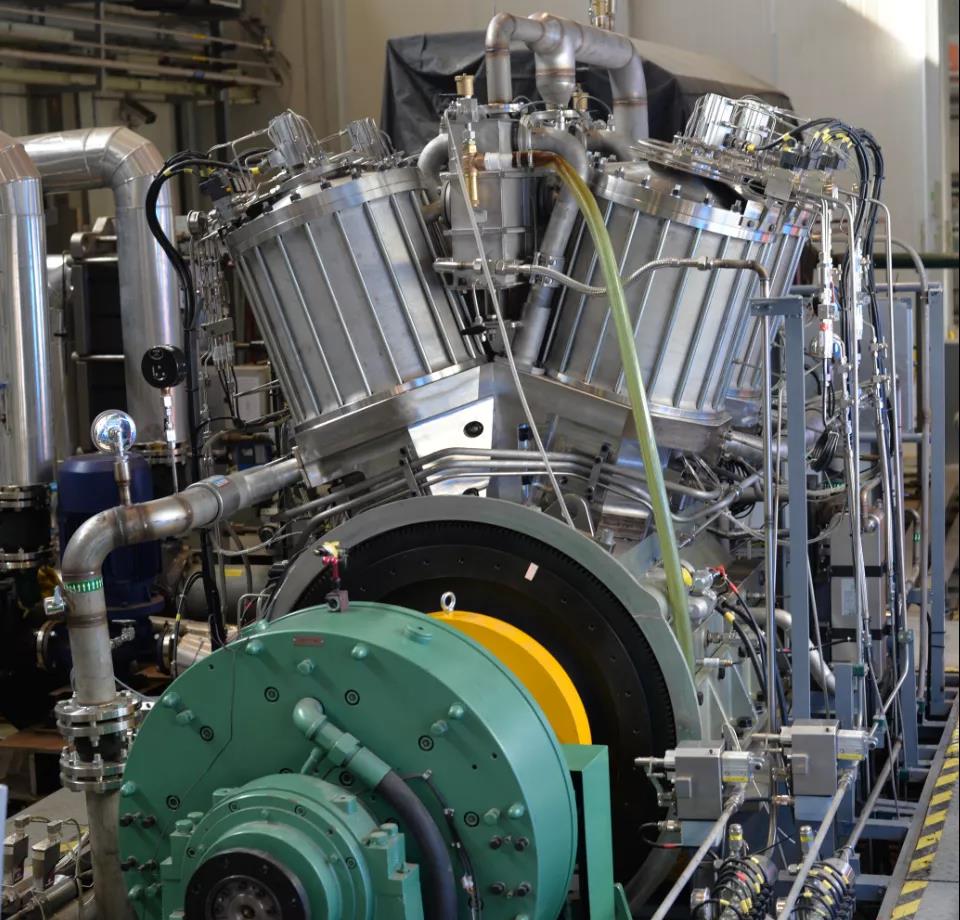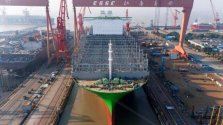This kind of ship brings added-value to chinese shipyards. AFAIK it is the largest cruise ship built outside europe. And building a domestically-design larger cruise ship will further add to the capabilities of these shipyards.
You are using an out of date browser. It may not display this or other websites correctly.
You should upgrade or use an alternative browser.
You should upgrade or use an alternative browser.
Chinese shipbuilding industry
- Thread starter tphuang
- Start date
To build LNG bunkering vessel with electric propulsion.
China develops world's most powerful Stirling engine
By Liu Xuanzun
Published: Dec 22, 2021 11:24 PM
In a latest highlight of China's efforts to domestically develop high-quality engines of different types, the country recently made a major breakthrough in making the world's most powerful Stirling engine, a type of heat engine with applications in power generation and submarine propulsion.
Developed by the No. 711 Research Institute under the China State Shipbuilding Corporation Limited (CSSC), the basic prototype of China's first large-bore Stirling engine successfully conducted the recent performance test. The prototype ran at a rated power of 320 kilowatts with a power conversion efficiency of 40 percent, making it the most powerful Stirling engine known around the globe, the CSSC said in a press release published in its WeChat account on Tuesday.
The success of the prototype is a milestone and a major breakthrough China has made in key technologies and craftsmanship in developing such kind of engines and laid down the foundations for its development of megawatt-class Stirling engines in the future, the CSSC said.
The Stirling engine is a closed-cycle reciprocating power machine that takes heat supply from external sources, the press release explained, noting that the engine can be combined with any kind of heat source, either conventional or nuclear energy, in many configurations.
A megawatt-class Stirling engine is tightly structured, has a simple system and can be started quickly and configured in modules. These will be significant advantages of the Stirling engine, the CSSC announced.
When used together with a sodium-cooled fast reactor, the Stirling engine can eliminate the risk of sodium-water reaction making it also a very safe choice.
The engine can spawn a series of variations to suit the need of power supply, ranging from 100 kilowatts to several megawatts, and is very suitable to be developed into a portable micro reactor power generator used in special environments such as polar regions, remote islands and Gobi Desert regions, according to the press release.
The Stirling engine is also known for its application on submarine propulsion, observers said.
Swedish Gotland-class submarines feature Stirling engine air-independent propulsion (AIP) systems, enabling them to avoid going to the surface to charge the batteries, and thus increasing the submerged endurance from days to weeks, according to an article published by Saab, the parent company of Kockums which built the submarines.
The Stirling engine is quiet and vibration free, so no vibrations spread out to the hull making the submarine silent in the water and therefore difficult to find, according to the article.
The CSSC press release did not mention the potential application of the Chinese Stirling engine on submarines.
China has experienced shortcomings developing engines of different types but the breakthrough in the domestically developed Stirling engine is only one example of the country's rapid engine progress in recent years, a Chinese military expert who requested anonymity told the Global Times on Wednesday.
At Airshow China 2021, China revealed the J-20 stealth fighter jet, equipped with domestically developed engines, and announced that two types of engines developed in the country are being tested for the Y-20 large transport aircraft.
In many aspects of engine development, Chinese companies still lag behind traditional industry leaders from foreign countries but that gap is narrowing thanks to the hard work of Chinese scientists and researchers. China's military, as well as its overall development, will not be hindered by engines in the long run, the expert said.
How many cruise ships ae built worldwide each year?This kind of ship brings added-value to chinese shipyards. AFAIK it is the largest cruise ship built outside europe. And building a domestically-design larger cruise ship will further add to the capabilities of these shipyards.
Report of the new Stirling engine from the state asset administration. Power of the base prototype: 320KW, 40% efficiency. It is said that there is ongoing development of model that is more than 1MW. It is also said to be suitable to combine with sodium cooled fast neutron reactor avoiding the danger of water in the loop.


Report of the new Stirling engine from the state asset administration. Power of the base prototype: 320KW, 40% efficiency. It is said that there is ongoing development of model that is more than 1MW. It is also said to be suitable to combine with sodium cooled fast neutron reactor avoiding the danger of water in the loop.

This looks something that you can put on the Type 032 test submarine.
Report of the new Stirling engine from the state asset administration. Power of the base prototype: 320KW, 40% efficiency. It is said that there is ongoing development of model that is more than 1MW. It is also said to be suitable to combine with sodium cooled fast neutron reactor avoiding the danger of water in the loop.

How useful it is a 320 KW (or 1 MW) engine ?


